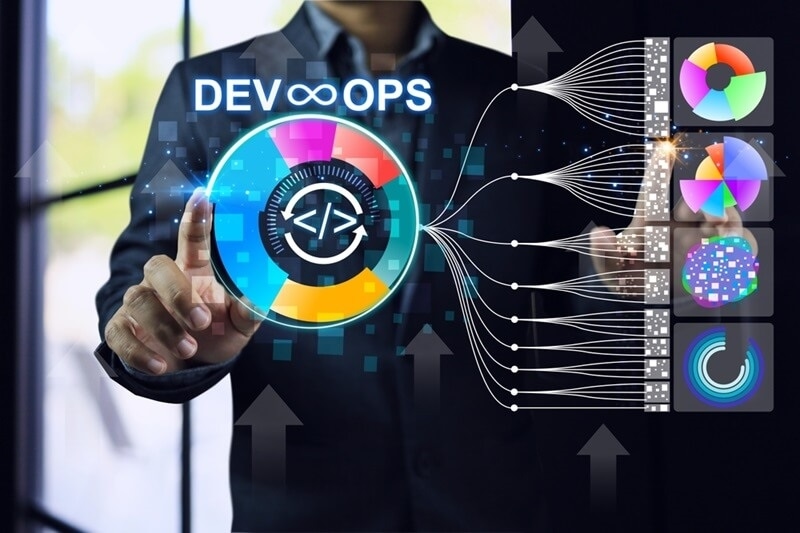
With this age of agile, quicker and better software delivery is the force behind innovation. This is where DevOps tools come into play. DevOps is being widely embraced by agile teams to eliminate operations and development silos, integrate tighter collaboration, and offer fast feature delivery to end users. Let’s take a closer look at DevOps automation best practices as well as top DevOps platforms.
DevOps isn't a set of practices—it's a culture of shared interaction, relentless learning, and automation if done right. DevOps brings a culture to Agile development teams where iteration is seamless, deployment is regular, and feedback is swift. It is essential that the teams who want to maximize efficiency know the DevOps environment, especially with cloud-native applications and emerging infrastructure continually becoming more advanced.
All the agile practices are based on delivering value incrementally in small steps. Without appropriate tooling and automation, however, these high-velocity sprints are confusing. DevOps closes this gap by making possible continuous integration, testing, deployment, and monitoring of infrastructure possible.
The pairing of DevOps and Agile helps to create an agile but stable development pipeline that provides business value more consistently and frequently.

The modern software deployment is based significantly on DevOps tools to drive all stages of the software life cycle. From coding through application deployment to production automation, these tools provide integration, automation, and monitoring in real time. Configured well, they remove human bias, achieve maximum reproducibility, and enable teams to react to market forces in short time.
DevOps is not achieved by installing tools. It means adhering to necessary automation best practices that improve the workflow and minimize the risk. It is vital to adhere to DevOps automation best practices in order to develop smooth, efficient, and seamless delivery processes.
With cloud computing coming to the forefront these days, DevOps for cloud application development has become an interesting area in itself. Cloud applications must be fast, scalable, and nimble—these being features empowered by DevOps in mass scale. Cloud platforms like AWS, Azure, and Google Cloud natively have support for DevOps which could be integrated into the premium automation tools seamlessly.
With cloud infrastructure, teams dynamically provision in minutes, auto-deploy, and scale workloads based on usage. This agility works best when combined with DevOps practices. A microservices application, for example, can be deployed across regions of a cloud, auto-monitor, and updated without downtime—thanks to automation and real-time feedback loops.
Cloud-native DevOps also offers other tools targeting particularly container security, orchestration, and observability. These ensure that the applications are secure, cost-effective, and resilient from the onset.
All the teams now design their entire delivery pipeline into the cloud. With cloud development, DevOps, and Agile cycles combined, businesses can release features weekly or even daily, turn user feedback much more rapidly, and react to new market situations with unheard-of flexibility.
Continuous integration and continuous delivery are the pillars of DevOps. In America, the building blocks of software automation pipelines are CI/CD tools, enabling organizations to push code more frequently, more securely, and more reliably.
Jenkins, GitHub Actions, GitLab CI/CD, and CircleCI are the most popular ones. All of these platforms are integrated with code repositories, provide automatic testing of test suites, and manage complex deployment workflows through environments.
What distinguishes CI/CD software in the USA is that they are highly flexible. They are all open-source, can be tailored using plugins, and can support both cloud and on-premises environments. These solutions allow development teams to construct stable pipelines that facilitate Agile sprints, where each new commit of code is tested and deployable.
Their adoption is accelerating since companies seek more time-to-market and better quality of products. They are the bridge to full DevOps uptake since they yield instant productivity and deployment frequency gains. The market-driven Agile teams cannot help but utilize CI/CD. Proper CI/CD tools USA offer a balance of rapid iteration and quality delivery.
Security in the past has generally been viewed as a siloed function, which would hold back software releases because it performed late-stage audits. That is no longer soaring in today's Agile-DevOps world. Instead, DevOps security integration, or DevSecOps, integrates security into the development pipeline right from the beginning.
Adding security practices early in the DevOps pipeline enables teams to catch vulnerabilities before they get into production. It also enables compliance and governance requirements to be met later without growth in development velocity.
There are only so many tools, and it's overwhelming to choose the best ecosystem. Organizations have to choose high-quality DevOps platforms that lie within their technology stack, team size, and work culture. The ideal platform should offer integration with common version control, automation support, built-in security, and a large developer base.
The appropriate platform also encourages adopting the cultural practices of DevOps, not tools alone. With this, it is possible to scale Agile development practices with ease, guarantee governance, and yet lead the improvement process in delivery.
Agile development is no longer possible without automation, collaboration, and continuous delivery. That is where DevOps tools fit in—driving all aspects of the contemporary software delivery pipeline. From source control and CI/CD to cloud infrastructure and security, DevOps provides the technical underpinnings that Agile methods need to flourish.
By embracing DevOps automation best practices, teams can deploy features in a more rapid manner, recover from failures better, and establish a culture of continuous improvement. With a special emphasis on DevOps for rapid and passionate cloud development, companies can tap into the potential of cloud computing to grow and innovate without limits.
Investing in the proven CI/CD tools in the USA, securing your pipeline through DevOps security, and selecting among the top DevOps platforms will make your Agile transformation long-lasting and fruitful. With the DevOps ecosystem further evolving, staying up-to-date and flexible is the future. The union of the proper attitude, tools, and methodologies will empower your team to develop better software faster, safer, and smarter.
This content was created by AI